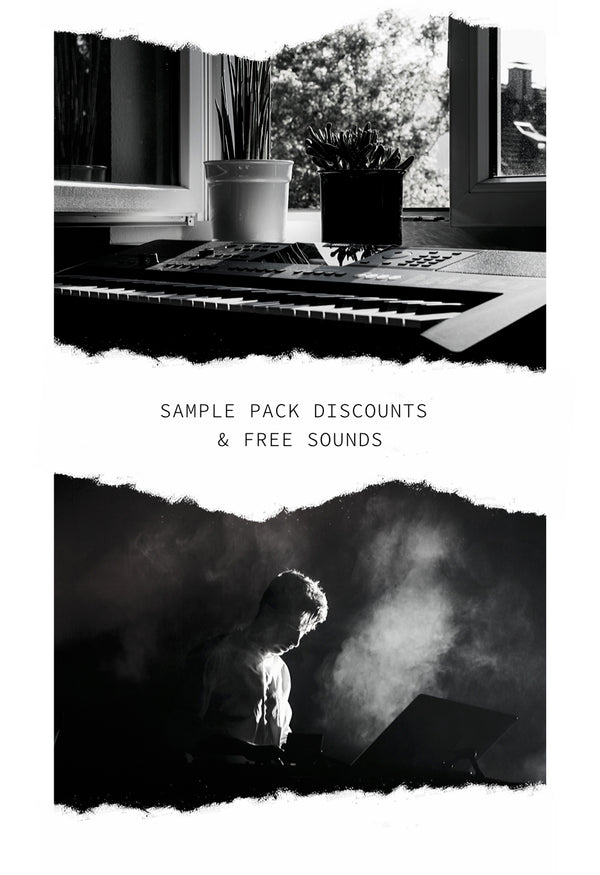Your Cart is Empty
⚠50% off code: SAMP50⚠
⚠50% off code: SAMP50⚠
⚠50% off code: SAMP50⚠
by Anders Johanson November 15, 2020 6 min read
It’s genuinely hard to make programmed drums sound good. Even rhythm-savvy producers spend hours finessing their percussive creations. The quick fix of quantization — the function in DAWs and drum machines that locks beats to a grid — tends to suck the life out of played beats. While you could spend the next 10,000 hours behind the MPC to get a flow like Dilla’s or chops like Just Blaze, here are some less time-consuming tricks to help bring that real feel to your beats.
First, some history. Programmed drums have been popular for decades. From obviously machine-heavy bands such as Kraftwerk to ’80s pop sensations A-Ha, drum machines have been at the heart of countless classic tracks. Practically every song by Prince features a Linn LM1; Marvin Gaye’s sultry ‘Sexual Healing’ opens with the unmistakable sounds of the Roland TR-808, and Kate Bush’s Hounds Of Love album exemplifies the combination of machines and ‘real’ instruments in perfect harmony.
In the modern electronic music landscape, computerized beats provide the relentless, pounding rhythms that keep dance floors packed long into the early hours. Their predictable repetition is not only convenient for music that is intended to be beat-matched by a DJ, but it also defines genres. Minimal techno, for example, relies on subtle changes in mechanical patterns to build energy in music — and euphoria in the audience — over long periods of time. Drum machines are great! But sometimes, even with electronic music, you want less machine, more human…
Drummer jokes normally riff on the fact that drummers can’t keep time. While this is often painfully true, it’s these natural timing slips that give a groove its character. A 100% quantized beat will sound lifeless, so the very first step is to avoid automatically quantizing your patterns to 100%. Though less-harsh quantize settings (70%, say) can be useful to tighten things up, quantize algorithms pay no attention to the musicality of your song. In other words, you’ll want to dig into your sequences to tweak them manually.
Pattern swing and groove settings can be helpful to quickly add character to the beat, by imparting a programmed offset to some of the beats in the grid. However, the repetitive nature of mechanical beats will still be hard to mask. Many producers manually move the notes around in their loops to create micro variations in timing. The goal here is not total randomness, but to push or pull certain elements of the groove to give it an organic feel.
Adding variation in velocity is almost as important as timing. Drummers don’t hit with the same amount of force each time they make contact with a drum or cymbal; they place emphasis at different measures in the pattern. An eighth-note hi-hat pop/rock pattern in 4/4, for example, will feel more human with more emphasis on the down beat and a softer off-beat.
Humans are highly attuned to identifying patterns. So a one-bar drum loop, no matter how ‘real’ sounding in isolation, will start to sound repetitive very quickly.
Machine-based drums sound the way they do because their sounds are triggered according to a virtual grid, which is generated by a digital clock signal inside the machine. Drum machines are generally hard to humanize, but that’s not to say that they can’t have character.
You’ll often hear musicians referring to ‘the pocket’. This is an extension of the concept of groove, where the pocket is the specific push and pull of timing within a looping riff, ‘felt’ by the musicians playing it. Drummers like Steve Gadd and Clyde Stubblefield were masters of the pocket, and bands like Parliament/Funkadelic and Hiatus Kaiyote demonstrate incredible dexterity in this regard.
The key here is the interplay between the bass, drums and other rhythmic and percussive elements of the musical arrangement. It’s crucial, when programming, to lock all these pattern components to the same groove, to get them all in the (same) pocket.
This seems like a dumb suggestion in an article about drum programming. But adding elements of human drumming or percussion — no matter how insignificant they seem — can brighten up the dullest of drums.
Hopefully this list of tips will have you on the way to characterful, vibrant drums. One final piece of advice, especially in a subject that will have you staring at little dots on the screen… if it sounds right, it usually is. Be sure to check out some of our essential sounds including our 808 Drum Kit & our Lofi Drum Kit Essentials pack to help you get those organic sounds.

Receive discount codes on sample packs, free sounds to your inbox, and more! Seriously, we send out free sounds!